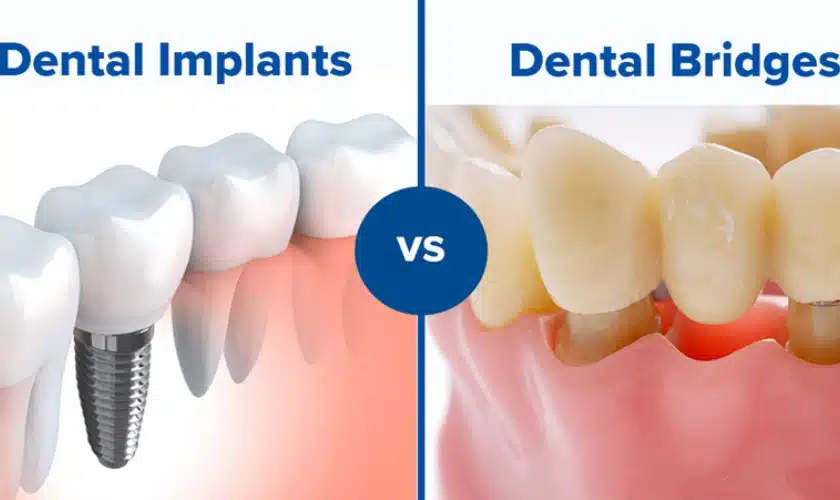Dental Sense for Dummies
Dental Sense for Dummies
Blog Article
The Single Strategy To Use For Dental Sense
Table of ContentsDental Sense Things To Know Before You BuyRumored Buzz on Dental SenseThe 30-Second Trick For Dental SenseGetting The Dental Sense To Work
are medical tools surgically implanted into the jaw to bring back an individual's ability to chew or their look. They supply support for man-made (fake) teeth, such as crowns, bridges, or dentures. When a tooth is lost because of injury or condition, an individual can experience problems such as rapid bone loss, faulty speech, or modifications to eating patterns that cause pain.Dental implant systems include an oral implant body and oral implant joint and might additionally consist of a joint fixation screw. Dental implants. The oral implant body is operatively inserted in the jawbone in place of the tooth's root. The oral implant abutment is normally connected to the dental implant body by the abutment fixation screw and expands through periodontals right into the mouth to sustain the affixed artificial teeth
(https://www.kickstarter.com/profile/dentalsense1/about)Structure of The Dental Implant System picking dental implants, speak with your oral provider regarding the prospective benefits and risks, and whether you are a prospect for the procedure. Things to think about: Your general health and wellness is a crucial aspect in establishing whether you are a good candidate for dental implants, for how long it will certainly require to recover, and how long the implant might remain in place.
Cigarette smoking may impact the recovery process and decrease the long-lasting success of the dental implant. The healing procedure for the dental implant body may take a number of months or longer, during which time you generally have a momentary joint in location of the tooth. the dental implant procedure: Very carefully adhere to the dental health guidelines offered to you by your oral service provider.
Some Known Facts About Dental Sense.
Implant failure can lead to the requirement for another surgical procedure to take care of or replace the dental implant system. Brings back the ability to eat Recovers aesthetic appearance Assists keep the jawbone from reducing due to bone loss Maintains the health of the surrounding bone and periodontals Aids keep surrounding (neighboring) teeth steady Boosts top quality of life Damage to bordering natural teeth during dental implant positioning Injury to the surrounding tissues during surgery, such as sinus opening Injury throughout surgical procedure (for example, fracture of surrounding jawbone) Inadequate feature, such as really feeling like the teeth do not attack together generally A sensation that the tooth is loosened or turning in area arising from a joint screw loosening Implant body failure (looseness of the implant body) as a result of systemic infection, which might be more likely in clients with unrestrained diabetes because of regional infection in bone and periodontals supporting the implant body due to delayed healing, which might be most likely in clients that smoke Trouble cleaning up the gum tissues around the implant, resulting in poor dental health Untreated periodontal condition Post-surgical tingling because of nerve impingement or damages Always alert healthcare companies and imaging service technicians that you have dental implants before any type of magnetic resonance imaging (MRI) or x-ray treatments.
FDA is not familiar with any adverse events reported for MRI or x-ray treatments with dental implants. Dental implants systems are normally made from products that adhere to global agreement requirements of the International Organization for Standardization (ISO) or ASTM International. These requirements have details of what makes a safe material.

A dental implant is a structure that changes a missing out on tooth. With screw-like tools, the specialist inserts a dental implant into the jawbone, and it serves as an anchor for an artificial tooth, called a crown. A gadget called an abutment links the artificial tooth to the oral implant. The crown is customized to fit the individual's mouth and match the color of their teeth.
Our Dental Sense Ideas
Some individuals are not eligible for dental implant surgical procedure. It is for oral cosmetic surgeons to operate individuals with: acute illnessuncontrollable metabolic diseasebone or soft cells disease or infectionIf these issues are dealt with, an individual can have the surgery. In, dental cosmetic surgeons refrain from operating people with: If individuals with any one of the above go through oral implant surgical procedure, there is a greater danger of the implant falling short.

Oral implant surgical treatment is a tailored procedure. It's not the same for everyone. However the following gives a basic introduction of what you can anticipate your dental practitioner, oral surgeon, periodontist or prosthodontist to do: Position the dental implant operatively. Provide you time to heal. Affix the message and final crown, bridge or denture.
Next off, your surgeon will meticulously put the dental implant right into your jaw. If your implant is near the front of your mouth, your dental practitioner will certainly make a short-term tooth for you to wear up until you heal.
Not known Facts About Dental Sense
Your supplier can tell you what to expect in your scenario. During the healing phase, your jawbone should fuse to the dental implant. This procedure, called osseointegration, is crucial for security and long-lasting success. This process can take anywhere from three to 9 months. Sometimes, it may take longer.
Once your implant heals, your dental practitioner can affix the joint (little connector article) and your last reconstruction (crown, bridge or denture). This usually takes regarding one hour to finish and might call for a second small surgery. You shouldn't feel any discomfort throughout your oral implant procedure since your service provider will certainly make use of drug to numb your gum tissues.
Report this page